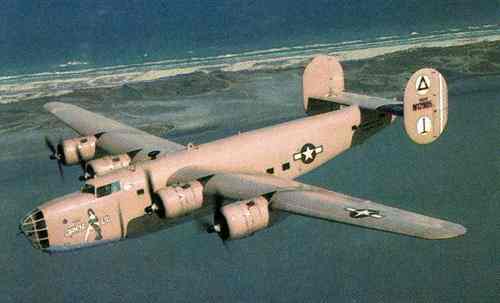
|
|
SUBSIM: The Web's #1 resource for all submarine & naval simulations since 1997
 |
SUBSIM: The Web's #1 resource for all submarine & naval simulations since 1997 |
|
|
 12-09-20, 07:51 PM
12-09-20, 07:51 PM
|
#1 |
|
Seaman
 Join Date: May 2020
Posts: 35
Downloads: 131
Uploads: 0
|
I'm a noob and almost into 1941 but at what date should I start being careful with aircraft?
|

|

|
 12-10-20, 02:36 AM
12-10-20, 02:36 AM
|
#2 |
|
Navy Seal
 |
In real, planes were dangerous from war start as they inflicted severe damages to few u boats even in 1940. But i think they became to start real nightmare by 1942.
In SH3, all depending what mod you are playing...the worst about planes threat being Ccom12 by far (and probably the most accurate) 
__________________
 |

|

|
 12-10-20, 06:00 AM
12-10-20, 06:00 AM
|
#3 |
|
Admiral
 |
The second you see them.
__________________
[SIGPIC][/SIGPIC] BSTANKO6'S SH5 NAVAL ACADEMY http://www.youtube.com/channel/UCPbe...W2NArCA/videos DISCORD https://discord.gg/6tFeTSUmVc |

|

|
 12-10-20, 07:25 AM
12-10-20, 07:25 AM
|
#4 |
|
Ocean Warrior
 |
Any plane at any time is to be avoided but historically, things ramp up in 1943. All the mega mods and the stock version of the game simulate this too.
__________________
"Realistic" is not always GAME-GOOD." - Wave Skipper 
Last edited by John Pancoast; 12-11-20 at 07:27 AM. |

|

|
 12-15-20, 11:58 AM
12-15-20, 11:58 AM
|
#5 |
|
Gunner
 Join Date: Oct 2019
Location: United Kingdom
Posts: 100
Downloads: 25
Uploads: 0
|
I only engage aircraft if they are Swordfish, anything other than a swordfish I crash dive and hope the bombs don't hit me.
One time on a Type IIA patrol in 1939 I decided to go through the gap between Scapa Flow and the Shetlands, I was attacked by 12 swordfish and managed to shoot down everyone of them before running out of ammo, didn't take a single hit from them. Makes me wonder how the Bismark had such a tough go of it. The only times I get messed up by planes are when the lookouts fail to spot them (usually in time compression) |

|

|
 12-15-20, 12:43 PM
12-15-20, 12:43 PM
|
#6 | |
|
Gefallen Engel U-666
|
Quote:
  " "
__________________
"Only two things are infinite; The Universe and human squirrelyness?!! Last edited by Aktungbby; 12-15-20 at 10:18 PM. |
|

|

|
 12-14-20, 06:56 PM
12-14-20, 06:56 PM
|
#7 | ||
|
Gefallen Engel U-666
|
Quote:
 REQUIRED READING:https://www.airuniversity.af.edu/Por...es/ridolfi.pdf REQUIRED READING:https://www.airuniversity.af.edu/Por...es/ridolfi.pdf Quote:
 Best advice: always be at decks awash always for quick crash dives and do not even mess with aircraft of any sort on the surface...Good hunting! Best advice: always be at decks awash always for quick crash dives and do not even mess with aircraft of any sort on the surface...Good hunting!  
__________________
"Only two things are infinite; The Universe and human squirrelyness?!! |
||

|

|
 12-14-20, 11:46 PM
12-14-20, 11:46 PM
|
#8 |
|
Krusty Krab
Join Date: Mar 2002
Location: Decks awash in the North Atlantic
Posts: 1,450
Downloads: 493
Uploads: 0
|
QUOTE=Aktungbby;2713668] Best advice: always be at decks awash always for quick crash dives and do not even mess with aircraft of any sort on the surface...Good hunting!
   [/QUOTE] [/QUOTE]I second this advise. You'll survive much longer. Good Hunting, FUBAR295
__________________
Good judgment comes from experience. Unfortunately, the experience usually comes from bad judgment.  |

|

|
 12-24-20, 12:06 PM
12-24-20, 12:06 PM
|
#9 | |
|
Ocean Warrior
 |
Quote:
I second this advise. You'll survive much longer. Good Hunting, FUBAR295[/QUOTE] Not sure how historical always being decks awash is fwiw. Iirc decks awash was actually only done via e-motors ? If so, running awash always would drain them. If not, then a waste of fuel via the added drag. The tactic was used only at very slow speeds during an attack scenario I believe vs. all the time/high speed.
__________________
"Realistic" is not always GAME-GOOD." - Wave Skipper 
|
|

|

|
 12-24-20, 12:24 PM
12-24-20, 12:24 PM
|
#10 |
|
Navy Seal
 |
I believe they never navigate Long distances deck a washed.
It might be just impossible... Never read any sort of thing. Only for approaching convoys.
__________________
 |

|

|
 12-24-20, 01:09 PM
12-24-20, 01:09 PM
|
#11 |
|
Krusty Krab
Join Date: Mar 2002
Location: Decks awash in the North Atlantic
Posts: 1,450
Downloads: 493
Uploads: 0
|
I use decks awash when the sea is smooth or calm and only during daylight hours and only early war up to early 1942. After that not so much.
Interestingly, I found no mention of decks wash in the Uboat Commanders Handbook, so not sure how often it was used in real life. Good hunting, FUBAR295
__________________
Good judgment comes from experience. Unfortunately, the experience usually comes from bad judgment.  |

|

|
 12-24-20, 08:04 PM
12-24-20, 08:04 PM
|
#12 | ||||
|
Gefallen Engel U-666
|
Quote:
Quote:
 : :  Some interesting reading from 2009 for SH IV: Some interesting reading from 2009 for SH IV: Quote:
 if Uboat.net is even discussing decks awash...then somebody musta did decks awash!!! if Uboat.net is even discussing decks awash...then somebody musta did decks awash!!! Quote:
 Bad Guy #1- my late uncle (just died 3 months ago; age 95) flew these bad boys! Bad Guy #1- my late uncle (just died 3 months ago; age 95) flew these bad boys!
__________________
"Only two things are infinite; The Universe and human squirrelyness?!! |
||||

|

|
 |
|
|
